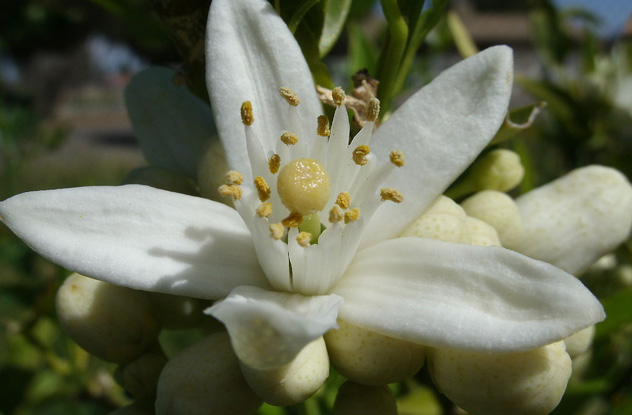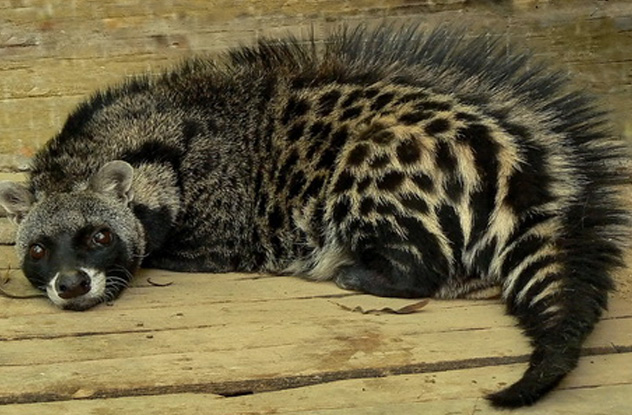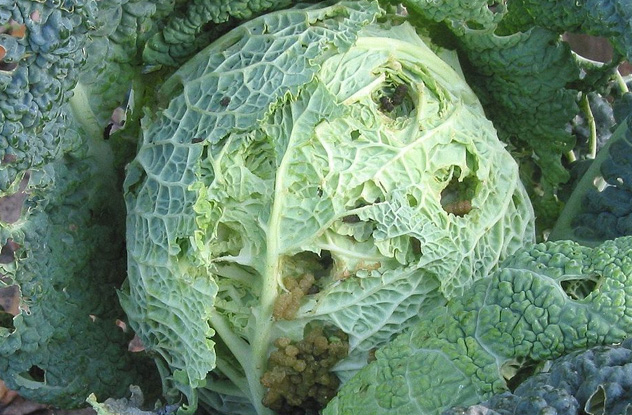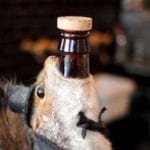 Politics
Politics  Politics
Politics  Weird Stuff
Weird Stuff Ten Bizarre Facts About The Doge Meme
 Our World
Our World 10 Ways Your Christmas Tree Is More Lit Than You Think
 Movies and TV
Movies and TV The 10 Coolest Stars to Set Sail on The Love Boat
 History
History 10 Things You Didn’t Know About the American National Anthem
 Technology
Technology Top 10 Everyday Tech Buzzwords That Hide a Darker Past
 Humans
Humans 10 Everyday Human Behaviors That Are Actually Survival Instincts
 Animals
Animals 10 Animals That Humiliated and Harmed Historical Leaders
 History
History 10 Most Influential Protests in Modern History
 Creepy
Creepy 10 More Representations of Death from Myth, Legend, and Folktale
 Politics
Politics 10 Political Scandals That Sent Crowds Into the Streets
 Weird Stuff
Weird Stuff Ten Bizarre Facts About The Doge Meme
 Our World
Our World 10 Ways Your Christmas Tree Is More Lit Than You Think
Who's Behind Listverse?

Jamie Frater
Head Editor
Jamie founded Listverse due to an insatiable desire to share fascinating, obscure, and bizarre facts. He has been a guest speaker on numerous national radio and television stations and is a five time published author.
More About Us Movies and TV
Movies and TV The 10 Coolest Stars to Set Sail on The Love Boat
 History
History 10 Things You Didn’t Know About the American National Anthem
 Technology
Technology Top 10 Everyday Tech Buzzwords That Hide a Darker Past
 Humans
Humans 10 Everyday Human Behaviors That Are Actually Survival Instincts
 Animals
Animals 10 Animals That Humiliated and Harmed Historical Leaders
 History
History 10 Most Influential Protests in Modern History
 Creepy
Creepy 10 More Representations of Death from Myth, Legend, and Folktale
Top 10 Bizarre Ingredients In Perfume
Since the dawn of civilization, man has been a perfumed creature. Whether it be for improving the smell of our environment, offerings to please the gods, or simply to mask unpleasant body odors, perfume has played a constant role in our history.
The earliest perfumes were composed of all-natural ingredients. Perfumes for the gods were composed largely of resins (frankincense, opoponax, and myrrh) and precious woods, while perfumes for the body added floral and fruity touches. Toward the end of the 19th century, scientists began discovering that the outcome of many of their experiments resulted in odors previously unknown, and there began the development of modern perfumery. For the first time in history, natural ingredients, though still taking a front row, began to be supplemented with exciting new chemicals.
More than 100 years on, perfumes are now mainly constructed around synthetic chemicals with the addition of trace amounts of natural oils. Nevertheless, many of the ingredients from history remain in the perfumes we spray on our skin every day. What may surprise you is that many of these chemicals (and a large number of natural ingredients) are downright bizarre. No one knows who first discovered the fact, but even the most beautiful perfumes can be enhanced with the addition of unpleasant (and sometimes even downright repulsive) ingredients. This list looks at 10 of the worst.
10Tonquin Deer Musk

We are starting the list off with the least noxious-smelling ingredient: tonquin deer musk. Certain types of male deer have pods between their legs, which are used to spray their environment with musk to attract female partners. Humans have prized this musk for more than 1,000 years, as it was discovered that it prolongs the odor of perfume.
Unfortunately for the deer, while the musk pods can be extracted without killing the animal, it is easier to obtain them if he is dead. This ingredient was so highly prized that it was used in virtually every perfume up until the 1970s, when it was finally restricted by CITES (the Convention on International Trade in Endangered Species of Wild Fauna and Flora). It was also used as a food additive.
The odor of deer musk is, as you might expect, not particularly pleasant, but in extreme dilution, it becomes somewhat floral and sensual. It was most often used in dilutions of 3 percent or less as a fixative, though some perfumes relied on far larger quantities to add a distinctive animal odor. One of those perfumes is still sold today, though it now bears only a passing resemblance to the original. That perfume is Chanel No 5, which was formulated around a whopping 15 percent of deer musk tincture and 15 percent of civet tincture (more on that shortly!). Needless to say, the original Chanel No 5 was a great big skanky beast in contrast to today’s light floral scent. Bottles of the original are available on eBay and understandably command very high prices.
9Castoreum

Our next item is also fairly safe in terms of odor, but it is still bizarre for the very fact that someone decided it should be used to perfume our bodies.
Castoreum is a secretion from the castor sacs of beavers. These sacs are located right beside the anal sacs. The beaver uses the secretion to mark its territory, and in technical perfumer terms, it is considered a musk.
The odor bears a pleasant resemblance to wood and leather, which led to it being used in perfume to add those notes as no other suitable ingredient existed until modern perfumery. The majority of modern perfumes now exclude it. Nevertheless, it is still considered a vital ingredient in luxury perfumes, which often combine it with synthetic leather notes to create a more natural result.
One of Francois Coty’s most famous perfumes, L’Origan (1908), featured a large dose of castoreum at 0.5 percent pure. Like deer musk, it acts as a fixative and forms a significant part of the odor profile. Sadly, L’Origan, like most perfumes today, has been reformulated to make it safer and more PR friendly. So, again, you need to go to eBay to sample the original.
And guess what? Castoreum is still used today as a natural food additive to enhance the flavor of strawberry and raspberry. Chances are, not only have your probably worn this on your skin—you have very likely eaten it, too!
8Dimethyl Sulfide

Dimethyl sulfide is one of the strongest chemicals in perfumery. It has a penetrating, repulsive odor of sulfur and onions. Not surprisingly, it is found naturally in onions, asparagus, durian fruit, and the dead horse arum lily. Despite its vile odor, it is also surprisingly found in roses and geraniums.
Dimethyl sulfide is used in perfumery to enrich the rosiness of geranium oil, to make a more natural rose base, and, believe it or not, to replicate the odor of the seaside, as it is one of the chemicals found naturally in the air on beaches.
Dimethyl sulfide should not be confused with dimethyl sulfate—also smelling of onions—which is a toxic material used in chemical weaponry.
7Costus Oil

Costus oil is another recently banned perfumery ingredient, partly because it is becoming endangered in its native India and partly because it is sensitizing, though there is some dispute about that. It was a very common ingredient in classical perfumery and was found in some of the greatest men’s perfumes to be created, perfumes such as Aramis and Patou Pour Homme, both now reformulated to remove it.
To imagine the smell of costus oil, you must be an animal lover (surprise, surprise). Costus has the most remarkable resemblance to the smell of wet dog hair. It is incredibly powerful and almost no one would find it pleasant—even in dilution. The real magic of costus oil is found when it is combined with other animal ingredients like castoreum and civet.
When carefully dosed in a perfume, it adds a note of unripe melons and iris flowers—two odors that are very difficult to create using only natural ingredients.
Synthetic replacements for costus now exist, but nothing quite manages to replicate the whole complexity of the natural oil.
6Phenols

The phenols make up a fairly large family in perfumery. They are produced naturally by many plants as a defense mechanism against insects and the environment in general. The most commonly used phenols in perfumery are called cresols, which are so named because they were originally synthesized from creosote, a by-product of coal tar production.
Like their namesake, they have a distinctive odor of creosote—a very pungent commercial cleaner–type smell. But most curiously, many of them also bear an additional resemblance to the smell of horse and human urine, which is not really surprising given that both contain large amounts of para-Cresol.
This may seem a terribly bizarre smell to add to a perfume, but the phenols are essential in the recreation of certain floral odors like that of jonquils and Ylang Ylang. They are also used to create fantasy bouquets of lilac and hyacinth.
It is safe to say that most perfumes have some phenols in them—whether added as a synthetic component or naturally in the many floral oils used, such as jasmine. Interestingly, salicylic acid, an important constituent of aspirin, is also a phenol.
5Ambergris

Ambergris is an intestinal secretion from sperm whales. Scientists are still not entirely sure which end of the animal expels the ambergris, but what is known is that perfumery ambergris must have spent years floating on the ocean. Fresh ambergris—or ambergris you might find if you killed a while and looked inside it—is valueless for perfume, as it has an incredibly foul odor.
After long aging, the ambergris loses much of its repulsive smell and becomes softer and slightly floral. Its main use in perfumery is as a fixative—even the tiniest drop can make a perfume last for days on the skin. For this reason, it was added to almost every perfume in the past.
Unlike many of the other items on this list, it is not animal welfare or the foul smell that prevents its use in modern perfumes but rather its incredibly high cost—starting from $26,000 per kilogram ($57,000/lb) depending on the quality. The price is high because most ambergris is found by chance on beaches.
Ambergris was also used by the wealthy in the past as a food additive and was a favorite of King Charles II, who ate it regularly with his scrambled eggs.
4Indole

Indole is a chemical found naturally in many flowers (mostly the white ones, like orange blossom, jasmine, and lilies). It is a very powerful chemical with a strong fecal odor. Its use in perfumery is to add naturalness to floral compounds. A synthetic jasmine base won’t truly smell like jasmine until a small amount of this foul-smelling substance is added to it. In modern minimalist perfumes, indole is often used on its own to add a jasmine note.
Most fascinating is the fact that the indoles are formed from a chemical that behaves very much like serotonin, which interacts with receptors in our brain, causing us to feel pleasure. In fact, LSD is an indole alkaloid, and this very reaction is the reason so many people take it. Of course, a healthier option would be to simply sniff a bouquet of jasmine flowers, which gives you all the pleasure without the fear of seeing insects crawling out of your skin.
3Civet Musk

Civet musk is a thick secretion from the glands of the civet cat, a mammal found most commonly in Africa and India. The most prized civet musk comes from farmed animals in Ethiopia. The odor of civet musk is putrid and extremely powerful. It has a long history of use in perfumery and as a food additive. And who can forget our list of disgusting foods dating back to our first year of existence, which features Kopi Luwak—coffee beans pooped out by civets.
Like many of the ingredients on this list, in extreme dilution, civet musk develops a very unique and appealing floral animalic odor. It was used in very large amounts in Francois Coty’s famous Chypre (at 1 percent of the formula) and, as mentioned earlier, in the original Chanel No 5 by Ernest Beaux. Most perfumes up until the late 20th century included civet in trace amounts. Even today, luxury perfumes still feature the ingredient, though mainstream perfumes tend to either omit it completely or use synthetic replacements, as in the case of Jicky by Guerlain, who no longer use natural animal products in any of their perfumes.
In the past, civet paste was adulterated to increase the profits of the traders. The main adulterants were honey and human baby poop, which is indicative of just how awful the real thing smells. The standard test for the purity of civet paste was a taste test.
2Mercaptans

Mercaptans are a horrendous-smelling group of chemicals. Their odor is sulfurous, most commonly considered to be the smell of rotting cabbages. While all of the mercaptans are powerfully sulfurous, their use in perfumery comes mainly from the subtle differences between the types. For example, ribes mercaptan has a hint of black currant, while furfuryl mercaptan has a note of coffee. A good perfumer will use these materials in such a way that the sulfur is downplayed while the accent notes stand out.
Mercaptans, along with dimethyl sulfide mentioned above, is found in human flatus (gas). These chemicals are so foul-smelling that they are used to scent the otherwise odorless natural gas so that gas leaks are detectable by humans.
1Skatole

There are no two ways about it: Skatole is utterly repulsive. Even in extreme dilution, it stinks. That is, until you combine it with other compounds, at which point it develops a floral odor. Skatole is a compound that naturally occurs in feces and coal tar. It is the pure unadulterated stench in those materials. It is literally the essence of poop.
While skatole is actually part of the indole family, it is so vile that it really deserves its own spot on this list—and most definitely the top spot.
As well as forming part of the odor profile of animal waste, skatole is also found in minute traces in many flowers, such as jasmine and orange blossom. In combination with indole, it helps give these flowers a powerfully erogenous undertone.
Perhaps the most famous perfume to feature skatole in doses that should perhaps be illegal was Nuit de Chine (Chinese Nights) by Maurice Schaller in 1913 for Les Parfums de Rosine. Nuit de Chine was a fougere (fern) type perfume built around a core of sandalwood, skatole, peach, and rose. When you smell this fragrance, the skatole makes its presence known from the get-go, but it is so perfectly balanced with the other ingredients that you can’t stop sniffing it.
And therein lies the reason that these bizarre ingredients find their way into the perfumes we love: They spark off a very intense and pleasurable psychological effect in our brains.
+Competition

It has been a long time since Listverse ran a competition, so I am pleased to announce one today.
I have recently been dabbling in perfumery, and consequently, I own samples of all of the above. They are all very high-quality and have been sourced from the leading perfumery raw materials companies in the world. Consequently, they all comply with international regulations on the trade of animal products.
It is all very well to read about these fascinating ingredients, but it is another to experience them. For that reason, we will send a small vial of each of the 10 ingredients listed here to three people. That’s 10 vials each.
The prize will go to the writers of the three comments with the most upvotes—so make your comments interesting!
Entries will close 48 hours after the publication of this list. The competition is open to all readers of any age and in all countries.








